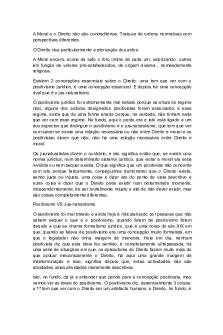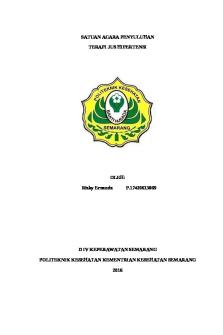Criminal jus 9:26 - Cheryl Irons PDF

| Title | Criminal jus 9:26 - Cheryl Irons |
|---|---|
| Course | Introduction to Criminal Justice |
| Institution | Temple University |
| Pages | 3 |
| File Size | 46.9 KB |
| File Type | |
| Total Downloads | 80 |
| Total Views | 150 |
Summary
Cheryl Irons...
Description
Notes ! Criminal Justice ! 9/26! Social process***! Every person has the potential to commit crime not just the poor! 3 main types of process theories; learning, control, labelling ! Learning theory- criminal activity is learned-family,peers! 1939- Sutherland posited differential association; exposure to criminal others with belief crime is ok leads to increased likelihood of crime.! Control theory ! -concept social links keep people in line! -link to prosocial (can be a parent, sports , etc like you have something to lose ) influence, commit to conventional lifestyle,! -all have potential to commit crime, restrained by ties to family, church etc! -belief in values shared by those important in ones life! -if lacking, may result in crime! Labelling! -society creates deviance by making rules, then applying sanctions to specific groups and labelling them outsiders.! -one labeled as deviant, they believe it is true! Presumed by others as deviant , react accordingingly! Ex. People who look like middle eastern in an airport are checked bc may be a ‘terrorist’! Policy implications; if crime behavior is learned, must build conventional bonds, provide pos role models, avoid labelling-promote stable families, community agencies to help poor families.! Social conflict;! -mid 1960’s- how the cj system designed to control the poor ! -rich commit as many crimes, poor likely to be caught, punished ! -powerful use laws to protect themselves, change definition of crime to target acts viewed as threat ! Critical, radical, marxist criminologists; class structure causes certain groups labeled as deviant ! Crim law aimed their behav causing their to hostility to social order ! When status quo threatened, def law changed to trap them! -vagrancy laws to arrest demonstrator civil rights and labor unions! Policy implications, conflict theories! -reduce class based conflict and injustice ! -focus on crimes committed by upper class too! -introduce policies to help poor, women and minorities ! Life course explanations! -identity factors shaping crim careers, why they begin and end! -studies try to follow child to adult to id these factors! -crim careers often begin at an early age! -pathways begin in diff ways aka lying,minor theft etc!
Bullying and fighting may be origin to diff kind of crime than drug use and sale! Factors; school failure, unemployment, may overlap into other theories, but it is studied as an evolution over life course ! Sampson and lamb, leading theorists, built on sheldon and glueck studies of lives of 1000 boys …..! employment marriage lead away from crimes! -other theorists look at how incarceration diminishes prospect of pos life course development ! -policy implications; less use of incarceration for youthful offender, encourage, support turning pnts,! Women and crime! -commit far less then men! -theories, research based on males! -most traditional theories don’t explain why women offend less, e.g about 25% of crime in 2009! -but women’s share has increased as overall, crime rates have declined! -commit diff types of crime—less likely violent crime, more often prostitution, theft. ! Poss explanations-women’s equality, police increased willingness to arrest, zero tolerance in domestics! Social strut theory suggests diff opportunity in work force, power and differences in sexuality shape behave of men and women! Impact of strain?-! Life course theories suggest email pathways ddisrupted by victimization may cause offending in women! -schloars; as status of women changes in workforce, more likely inc in white Collar crime !
Goals of cj system ! Sandusky case illustrates steps in cj decisionmaking;! Goals of system; -doing justice -controlling crime -preventing crime Justice; fairness in law making, investigating, judging and punishing. Uphold individual rights, punishing offenders (constitution)! 3 principles;! -offenders held accountable for actions ! -rights protected ! -like offenses treated alike, relevant diff bw offenders, offenses accounted for ! ex. If offender is mentally retarded will be accounted for ! Crime control;! -by arrest, prosecution, conviction, punishment of offenders, within the frame work of the law;! Law defines what is illegal outlines offenders rights and set procedures for officials to follow! Crime prevention; done in various ways;! -deterrent effect-punishment as ex to others! -visible police presence ,!
-citizen precautions! Police have authority to enforce law, citizens must rely on them !...
Similar Free PDFs

Criminal jus 9:26 - Cheryl Irons
- 3 Pages

Salvaje-Cheryl-Strayed
- 230 Pages

Positivismo VS jus naturalismo
- 3 Pages

JUS 101 Final Project
- 12 Pages

SAP terapi jus hipertensi
- 14 Pages

JUS 455 Additional Readings
- 4 Pages

JUS-212 Rational choice
- 3 Pages

FNP NR511 Week 2 Snapps Cheryl
- 4 Pages

JUS D Orange Francais Processus
- 8 Pages
Popular Institutions
- Tinajero National High School - Annex
- Politeknik Caltex Riau
- Yokohama City University
- SGT University
- University of Al-Qadisiyah
- Divine Word College of Vigan
- Techniek College Rotterdam
- Universidade de Santiago
- Universiti Teknologi MARA Cawangan Johor Kampus Pasir Gudang
- Poltekkes Kemenkes Yogyakarta
- Baguio City National High School
- Colegio san marcos
- preparatoria uno
- Centro de Bachillerato Tecnológico Industrial y de Servicios No. 107
- Dalian Maritime University
- Quang Trung Secondary School
- Colegio Tecnológico en Informática
- Corporación Regional de Educación Superior
- Grupo CEDVA
- Dar Al Uloom University
- Centro de Estudios Preuniversitarios de la Universidad Nacional de Ingeniería
- 上智大学
- Aakash International School, Nuna Majara
- San Felipe Neri Catholic School
- Kang Chiao International School - New Taipei City
- Misamis Occidental National High School
- Institución Educativa Escuela Normal Juan Ladrilleros
- Kolehiyo ng Pantukan
- Batanes State College
- Instituto Continental
- Sekolah Menengah Kejuruan Kesehatan Kaltara (Tarakan)
- Colegio de La Inmaculada Concepcion - Cebu






